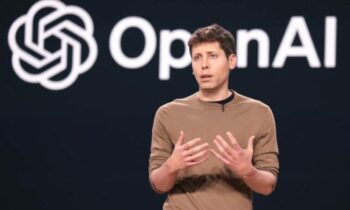The DALL-E editor, an AI picture generator available in ChatGPT’s premium tiers, has been updated by OpenAI.
The company released DALL-E 3, an AI model, in September of last year, and it serves as the basis for this functionality. A few weeks later, ChatGPT was updated with the model by OpenAI. The DALL-E editor’s initial release from last year allowed users to create images using text prompts and visual examples, as well as perform follow-up modifications.
Users will find it simpler to alter the photographs they create thanks to the upgrade.
The DALL-E editor in ChatGPT-3 can be used via the same chatbot interface as the other elements of the service. Users can select the exact image part they want to change by highlighting it with the newly added “Select” button at the top of the screen. They can then input instructions in natural language that specify the modifications they want to make.
For instance, the DALL-E editor may be used to erase a circle drawn around a tree in a picture of a forest. It is also feasible to add new elements or alter the way existing ones are designed in an image. In a knowledge base post outlining the upgrade, OpenAI stated, “We recommend selecting a large space around the area you intend to edit to obtain better results,”
On this occasion, the developers of the organization have also included some usability elements. Users can easily deselect portions of an image they highlighted with the Select tool in the DALL-E editor by using the new Undo and Redo buttons. In addition, users can get drawing style recommendations and change the aspect ratio of the image produced by the program.
OpenAI offers two more advanced product tiers for businesses in addition to ChatGPT Pro, a premium version of the chatbot targeted towards consumers that includes the DALL-E editor. The mobile and web versions of the function are both available.
The feature’s AI picture generator, DALL-E 3, is the third version of a neural network that OpenAI initially unveiled in 2021. Compared to earlier iterations, it produces photographs of a higher caliber. Additionally, OpenAI attributes the improved accuracy of its instruction following to the training dataset of DALL-E 3.
The AI was trained by the company’s researchers using a sizable collection of photos and captions. 95% of those captions, according to OpenAI, were produced with a unique language model made especially for DALL-E 3. According to OpenAI, this language model produces comparatively brief visual descriptions that focus primarily on an image’s essential components. This method is useful for AI training.
The company has created multiple models, including DALL-E 3, for jobs related to multimedia generation. Other entrants in the category are the Sora text-to-video model and Voice Engine, an artificial intelligence system capable of producing synthetic speech. Of the three, DALL-E 3 is the only one that OpenAI has made widely accessible.



